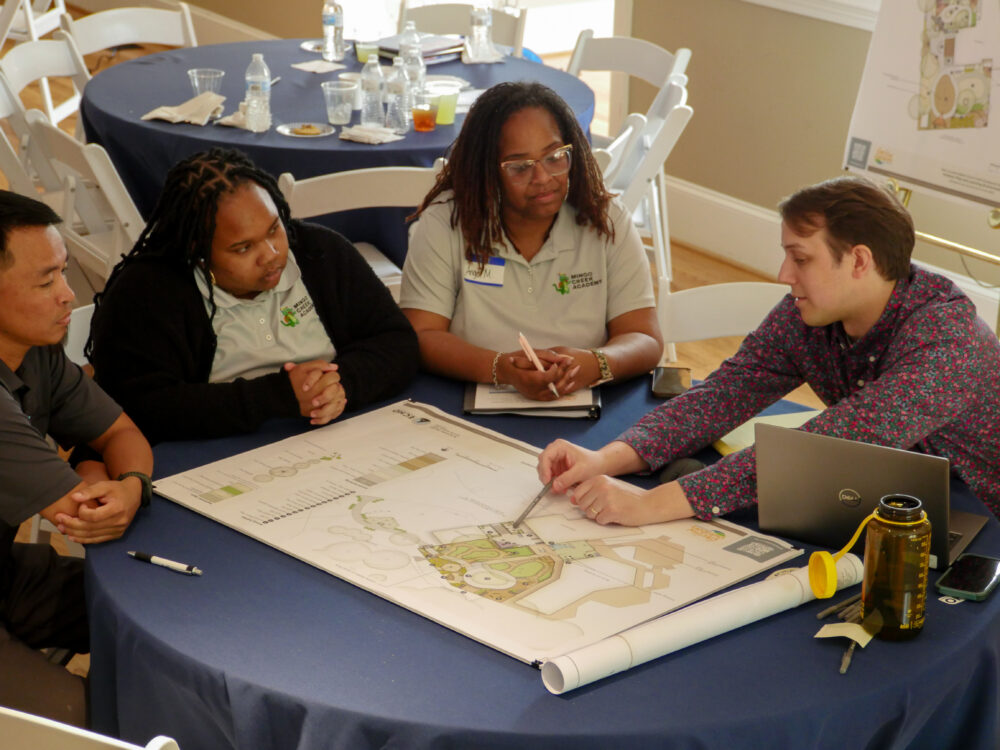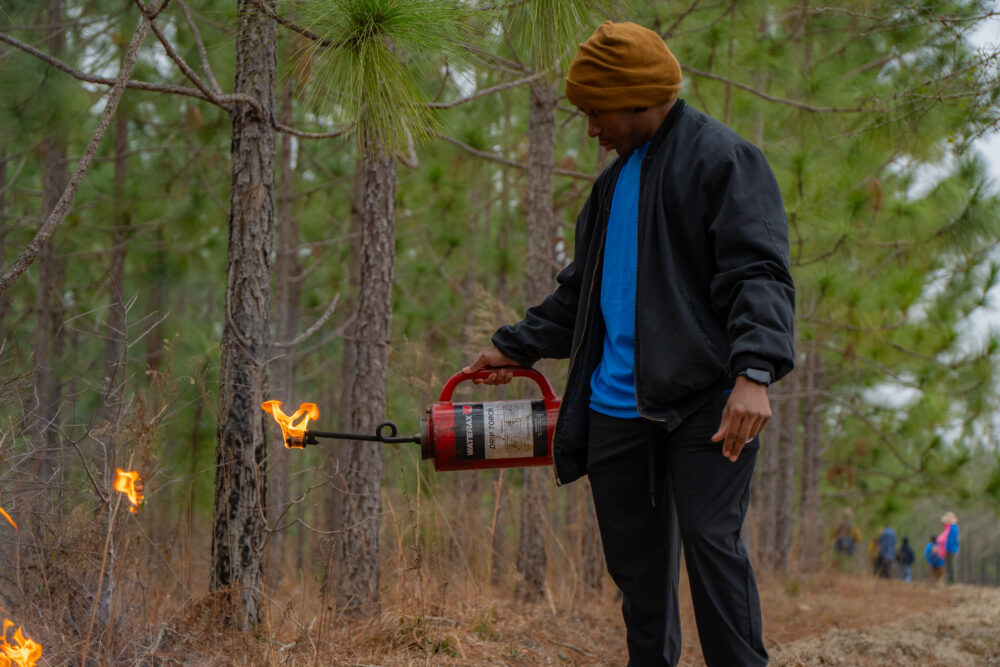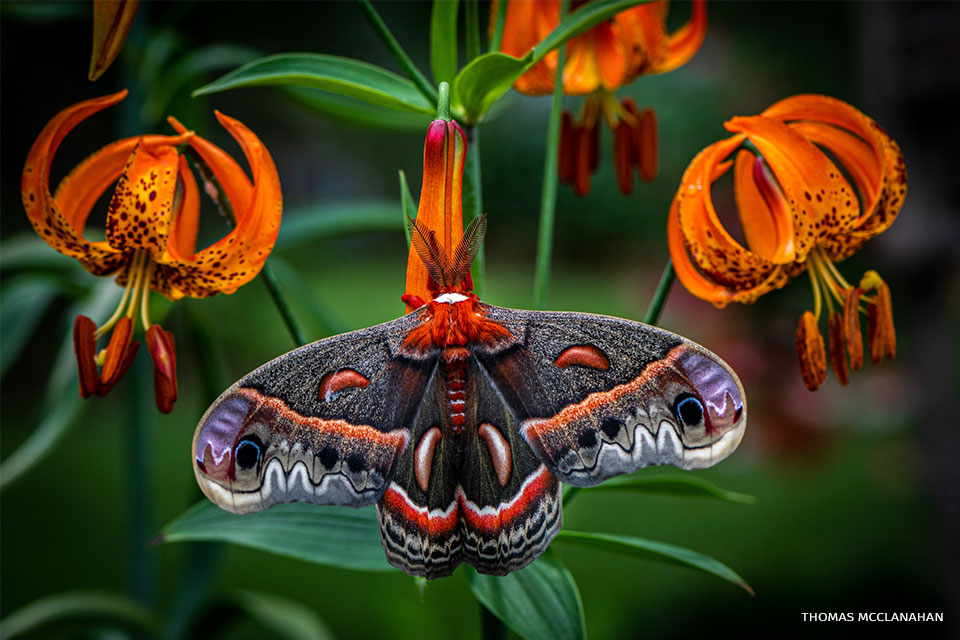We have much more to do and your continued support is needed now more than ever.
Capturing Student Energy
Molly Murfee
October 27, 2009

A class at Loyola University-Chicago called Solutions to Environmental Learning, or STEP, helped Hoy connect the issues by engaging him and his classmates in real-world experiments conducted right on campus. Over the course of three semesters, students researched, planned and executed a working biodiesel laboratory. Now, they are working on putting that alternative fuel into campus shuttle buses. Hoy helps educate students and the community about the project through press releases, website development and creating branding logos and guidelines.
“The course took me to new territories,” he says, “of how to formulate an idea and how to get it funded. You can’t just look at something from an environmental perspective. You must also look at it from a business, marketing and economic standpoint. Now I see advertising as a useful tool in communicating about things like the availability of biodiesel.”
STEP helped Hoy expand his career goals. And he did so while simultaneously forwarding steps towards sustainability at Loyola.
As institutions complete energy assessments and plans of sustainability, many of them are beginning to engage students in the process. From research to installation, students at campuses such as Indiana University, Loyola University-Chicago and DeKalb Technical College are delving into actual implementation of sustainable practices through internships, classes and special projects. And as schools acquire anything from low- energy light fixtures to operational biodiesel labs that work to reduce their own carbon footprint, students are getting hands-on, career-building experiences in the process.
“It is not as much flipping off lights as it is about educating students,” asserts Marshal Eames, sustainability director at Loyola University-Chicago. “We can put in motion detectors and low-flow water installations but the impact is minor compared to making students aware of the consequences of their decisions. They must be able to make environmentally-savvy and informed choices, and to be aware of the issues and potential solutions.”
Making students integral in the sustainable planning process
When Indiana University created its Sustainability Task Force in March 2007 to assess the current state of sustainability on campus, they looked beyond administration and faculty. They also looked to the students. Interns have now directly contributed to furthering the campus’ sustainability efforts through research, plans and recommendations. In addition to advancing the green goals of their own institution, they are gaining real-world experiences in the process, beyond the boundaries of a traditional four-wall classroom.
Student impact on IU’s campus sustainability initiatives is intentional. Michael Hamburger, co-chairman of the Task Force, explains they wanted to make sustainability part of the student academic experience, and to link the learning with un-academic departments of the university such as operations. In its first months of operation, the Task Force therefore created twelve sustainability internships for the summer of 2007 to help them evaluate the current state of their sustainability affairs, and to research real solutions for the university.
The Task Force structured the internships to address the concerns in seven working groups: education and outreach; resource use and recycling, energy, built environment, environmental quality, transportation, and food.
The first sustainability interns began the groundwork of researching best practices in other universities as well as evaluating their own situations at IU within the defined workgroups. One intern researched websites at other universities and created a design that still stands today. Another conducted a food survey, collecting information on the purchasing practices of the campus dining halls and calculating such data as how far the food had to travel. Yet another compiled information on the recycling system, and weighed this against other university practices.
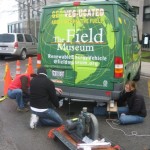
After six months of evaluation, the Task Force released the Campus Sustainability Report in January 2008. The report appraised the current status of sustainability on the campus, identified key concerns, and formulated a framework for a long-term plan. Thirty-two interns, both graduates and undergraduates, played critical roles in creating the document, making recommendations from the research they conducted during their experience.
“The students are getting a lot of exposure to what professionals actually have to deal with,” says Paul Sullivan, co-chair of the Sustainability Task Force. “If they’re calculating the campus carbon footprint they are talking to engineers, and seeing what they do on a day to day basis. They are no longer dealing in just theory.”
To date, over 60 students have participated in the internship program, now conducted under the new Office of Sustainability. The student internships are integral, therefore, in the university’s forward steps towards campus sustainability. They conduct important research and make valuable recommendations. In addition, many of them serve on the Student Sustainability Advisory Board.
“The students are really the centerpiece of what we do here,” says Rex. “We wouldn’t be able to do 95% of what we do if we didn’t have a highly intelligent, motivated student body.”
Using the campus as a laboratory
Like Indiana University, Loyola University-Chicago also has interns that choose to focus on sustainability issues. However, it is a student-directed class that births the most enthusiastic, hands-on projects for the campus. Over 100 students have enrolled in the class, getting their hands dirty in such projects as a biodiesel lab and a beekeeping operation to produce honey. Participating students are gradually integrating these small businesses as a permanent part of Loyola’s own sustainability initiatives.
Nancy Tuchman, Director for the Center for Urban Environmental Research and Policy (CUERP) at Loyola University-Chicago, wanted a truly interdisciplinary course in her department that could operate like a real-world situation, with the ultimate goal of making the campus more sustainable. Her brainchild was the Solutions to Environmental Problems (STEP) course based on educational models of interdisciplinary, experiential learning.
The first semester began in 2007, with biodiesel as the topic. Students heard perspectives from seven different disciplines and collaborated with 40 faculty, staff and community members from across the educational spectrum. Instructors came from the departments of communications, political science, biology, natural sciences, chemistry, environmental studies and business administration.
Students determined the environmental problems within the topic of fuel production and set off to address the solutions through projects they designed. Each group received grant writing experience in submitting a proposal about their project to faculty. Once approved, they were given a budget and mentors to support the work.
One group was in charge of production, and built a lab to manufacture biodiesel. They collected waste vegetable oil from the campus dining facilities, learned how to mix it with methanol and lye, filtered and assured its quality. Now, even the glycerin waste product is utilized as students make soap sold on campus.
Another student group created a business plan complete with a financial analysis, a business model to direct the operations of the lab, and a strategic vision. They researched the cost of biodiesel’s production as well as potential distribution. A communications team created marketing materials to spread the word while another completed a comparative automobile exhaust emissions analysis to evaluate the effectiveness in pollution reduction.Yet another researched public policy, including fuel laws and tax code. One member of this group is drafting a bill for the Illinois legislature concerning biodiesel production. At the end of each semester, students leave a blueprint for the incoming interns to build upon as well as make suggestions to faculty about which environmental umbrella topics should be tackled next.
“The course serves as an incubator for a lot of campus sustainability projects,” says Adam Schubel, co-faculty for the course as well as the educational programs coordinator for CUERP. “It’s a sort of lab, a testing ground, where we experiment with different projects and see how they can work. Our vision is that a lot of these projects become long-term.”
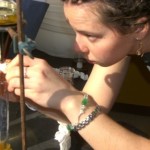
The STEP biodiesel class lasted three semesters. Now students are putting food systems under the same scrutiny with honey and herb production, compost cultivation from dining hall waste, and evaluating food purchasing on campus. Throughout the young life of the STEP course, students have completed over 20 projects that have worked to reduce the use of fossil fuels at Loyola as well as address the issues of food system sustainability from campus to the surrounding community.
“It is a slower process,” admits Tuchman, “but the most important thing is to transform the minds of the students. The only way we can tackle global climate change is to realize that every person is responsible for their impact. If we don’t include students we have missed an opportunity to make a long-term effect. They can go from being a passive student to one that takes ownership and has a sense of empowerment. We can make change, and we have the tools to do that.”
The bottom line: career training
Students at DeKalb Technical College are also utilizing their campus as a “living laboratory” with actual installations of energy efficient technology in their half-century year old buildings.
The college received the promise of $760,500 in federal stimulus funds to retrofit their buildings and make them more energy efficient. Students will become engaged in projects such as installing high efficiency light fixtures and a lighting control system as well as a system to monitor the equipment and the subsequent energy use. A building automation system will control the heat, lights and air conditioning to enhance energy savings when no one is in the building. The retrofits are estimated to save the college $114,000 per year.
Once in place, the students are responsible for not only maintaining the systems, but evaluating their performance and problem solving solutions to improve it. The effort is part of the Green Technologies Academy (GTA), a program just created as a part of DeKalb. Students study GTA core courses and then obtain specialized “green” training within six specialized programs: drafting and design, automotive, home automation (electronics), air conditioning, building automation systems, and commercial refrigeration. ”
“Typically in a technical college the students are learning on models, or trainers,” explains Brian Lovell, director of the Green Technologies Academy. “But this is hands-on the way it should be, inclusive with real-world responsibility. What better education can a student get? The response has been overwhelming with record numbers in our programs that focus in the Green Technologies Academy.”
Stephanie Brown is one of the DeKalb students who will be taking advantage of the opportunity to install the new efficient systems into the old buildings. Already equipped with a B.A. in biology and a M.B.A., she came to the Academy to get hands-on training. She’s learning building automations systems and programming as well as strategies in energy efficiency. With her new associate’s degree, she hopes to start her own building automation system business.
“You don’t often get hands on training in the university setting,” she laments. “Here, I’m actually developing a skill set.”
“It’s a pretty fantastic symbiotic relationship,” concludes Rex from IU on the university’s inclusion of students in its own efforts towards sustainability. “Faculty, staff, administration and students learn from each other. Ultimately, we’re investing in human capital with students who will go on to be leaders in the country.”












